Guiyang: royal flush of Changsha
2023-06-24
Guiyang County, nestling in southern Hunan, is an unassuming hub of prosperity. It has a rich historical legacy, dating back over two millennia, earning it the title of “a living fossil”. During the Tang Dynasty, one-third of the empire’s official silver was sourced from this region. Guiyang’s flue-cured tobacco planting area and annual output are second in China only to Xuanwei City of Yunnan Province. Moreover, the county boasts an illustrious presence on the sporting stage, with an impressive tally of 54 national champions, 57 world champions, and 2 Olympic champions.
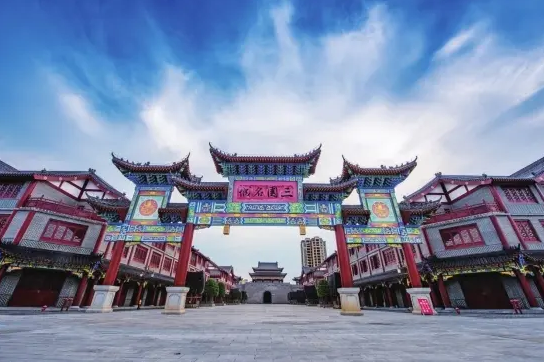
Positioned in the coveted “Golden Belt” where the Guishui River intersects the Five Ridges, Guiyang County has long been regarded as a pivotal crossroads, connecting the bountiful lands of Hunan Province and the vast territories of Guangdong Province. It encompasses the tenacity and audacity intrinsic to Hunan’s spirit while embracing the open-mindedness and inclusivity of the South culture. This unique blend of ancient traditions, contemporary vibrancy, profound substance, and relentless determination manifests as a formidable strength.
Guiyang County, akin to its famed national geographic symbol, the Five-Claw Pepper, symbolizes sheer strength and resilience. Its five claws extend skyward, forming a subtly curved fist, imbued with fiery intensity and unwavering vigor. Its posture exudes a daring and enterprising spirit, effortlessly balanced with poise and finesse. This clenched fist stance epitomizes an explosive display of power, wherein a single strike unleashes an overwhelming force, akin to a regal “royal flush”.
As the second Hunan Tourism Development Conference approaches, set to take place in Chenzhou City, it is with certainty that Guiyang County, occupying the coveted central position within southern Hunan, will garner heightened attention and admiration.

Millennial ancient county
Guiyang County proudly stands as the largest county in Chenzhou City in terms of both area and population.
Rarely does a county claim a thousand-year legacy, but Guiyang confidently embraces its title as the “Millennial Ancient County”. It is not a proclamation borne out of ostentation but rather a testament to its historical significance since its establishment as a county during the early Han Dynasty. For over 2,200 years, Guiyang has evolved through 10 distinct administrative divisions.
This “Millennial Ancient County” also serves as a historic gateway, a millennium-old key between the provinces of Hunan and Guangdong, fiercely contested by military strategists and a destination often traversed by exiled officials. During the Three Kingdoms period, the esteemed Zhao Zilong assumed the mantle of General-in-Chief and Governor of Guiyang. In the Tang Dynasty, Guiyang welcomed over 10 prime ministers and a multitude of influential court officials.
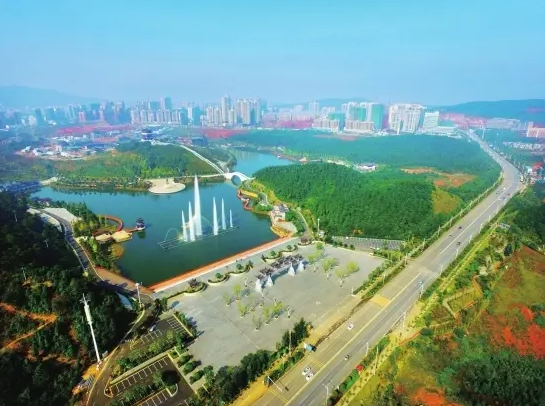
The Song Dynasty witnessed imperial relatives governing Guiyang, and even the Ming Dynasty’s notable statesman, Jiao Fang, found himself exiled to the region as the Governor of then Guiyang Prefecture. The annals of the Twenty-Four Histories chronicle the stories of dozens of upright officials who devoted themselves to the people and their offices, creating deeply touching tales of benevolence and loyalty.
Throughout the ages, Guiyang has been a favored haven for literati seeking inspiration. A simple search for “Guiyang poetry and literature” reveals the resonant verses of Wang Changling, who compared residing in Guiyang to a bird’s living in a forest, as well as Liu Yuxi’s melancholic poem, bidding farewell to the holly while contemplating the flowers on the Guiyang ridge. Guiyang, once perceived as a remote land of unfulfilled dreams, has attracted luminaries such as Wu Jun during the Southern Dynasties, along with Tang Dynasty poets Wang Changling, Li Bai, Du Fu, Han Yu, Liu Yuxi, and Liu Zongyuan.
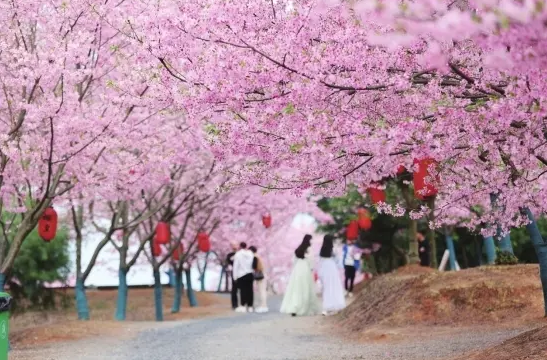
Notable visitors from subsequent eras include Northern Song Dynasty prime minister Wang Anshi, Southern Song Dynasty poet Huang Gongdu, Neo-Confucian philosophers Hu Yin and Zhang Shi, and esteemed figures like Guo Songtao, Wang Kaiyun, and Tan Yankai. Over the centuries, cultures have intersected and sedimented within Guiyang’s borders. The people of Guiyang do not merely cling to their historical heritage but rather harness its essence as their internal strength to ceaselessly exert its potential.
Today, traversing Guiyang feels akin to embarking on a captivating voyage through time. Countless ancient opera stages resound with the tales of Hunan Kunqu opera. Nine national traditional villages, including Yangshan Ancient Village, Dawan Village, and Jiantang Village, serve as living testaments to the county’s millennial legacy, exuding an air of antiquity. Within Guiyang Cultural Park, visitors can immerse themselves in a symphony of diverse elements derived from ancient counties.
Natural mineral museum
In China, when it comes to mineral reserves, there is no county that dares to claim the top position except Guiyang. Guiyang can genuinely be called a treasure trove, proudly boasting the title of a “Natural Mineral Museum”.
Guiyang County possesses a complex geological structure shaped by multiple tectonic movements, resulting in a radial and neo-cathaysian structural system. These formations have given rise to diverse topographies and a rich array of mineral deposits.
Renowned as the “Land of Eight Treasures”, Guiyang’s mineral resources far surpass the mere eight treasures. Currently, 103 distinct types of minerals spanning 11 categories have been identified. Notably, Guiyang ranks among the nation’s leaders in reserves of lead, zinc, copper, tin, and graphite.
Conservatively estimated, the county’s known mineral resources hold a potential economic value exceeding 80 billion yuan, with a per capita potential economic value of 101,000 yuan.
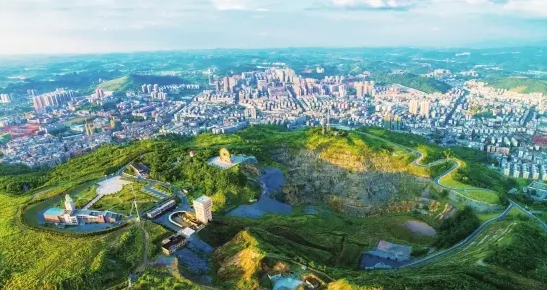
Due to its exceptional mineral endowment, Guiyang has sustained a legacy of mining achievements. Mining activities date back to the Han Dynasty, particularly in resource-rich areas such as Huangshaping and Baoshan. Abundant in gold, silver, copper, iron, lead, tin, coal, and quartz, Guiyang emerged as a significant hub for ancient silver refining and metallurgy, once attaining the stature of China’s national treasury.
During the Han Dynasty, a Gold Office was established, followed by a Supervision Office in the Tang Dynasty, dedicated to mining and coin minting. Notably, both the Han Dynasty’s Gold Office and the prefecture-level mining supervision office during the Northern Song Dynasty were unparalleled in the country. In its zenith during the Tang Dynasty, out of the 99 coin-casting furnaces nationwide, Guiyang boasted five, and one-third of the official silver production hailed from this locale.
The copper coins, known as “Kaiyuan Tongbao”, featuring the engraved character “Gui” on their reverse side, circulated throughout the nation. By the Song Dynasty, Guiyang held the foremost position in terms of metallurgical scale. Coins bearing the “Gui” character continuously emanated from this region, disseminating across the country and beyond.
Today, Baoshan has transformed into the first 4A-level industrial and mining tourist attraction in the central and southern regions of China—the Baoshan National Mining Park. A remarkable sight within the park is an imposing sculpture of a copper coin, the “Kaiyuan Tongbao”, prominently displaying the character “Gui” on its reverse side.
Not only does it represent the world’s largest copper coin sculpture, but it also serves as a prominent landmark of Guiyang. From this vantage point, one can behold a panoramic vista of the entire Guiyang City, capturing a glimpse of the funnel-shaped ancient mine pits and the adjacent mining museum. Baoshan beckons visitors from far and wide to experience the allure of Guiyang’s millennial legacy of mining and metallurgy.
Furthermore, Guiyang upholds the principle of “not selling minerals as mere stones” and extends its endeavors into the sophisticated processing of mineral products. This approach ensures the preservation of both its wealth of precious resources and its pristine natural environment.
Beyond its mineral wealth, Guiyang is also renowned for its affluence in other domains. With over 400 years of tobacco cultivation history, Guiyang has emerged as the second-largest flue-cured tobacco production base in the country, earning the illustrious title of the “Kingdom of Flue-Cured Tobacco”.
Cradle of champions
In Guiyang lies a picturesque landscape adorned with mountains of varying sizes, while an impressive network of 218 rivers, streams, and creeks meanders through the lofty peaks and deep valleys. Resembling a majestic saddle when observed on a map, this encompassing natural beauty has been the cradle for a multitude of distinctive local treasures that have been painstakingly cultivated by the resourceful inhabitants of Guiyang.
From the renowned Five-Claw Pepper and the delectable Zilong Jarred Meat to the exquisite dumpling, these gastronomic delights have not only tantalized the taste buds but have also shaped the unyielding character of the Guiyang people, imbuing them with resilience and fortitude. It is this indomitable spirit that has propelled Guiyang onto the global stage as the “Cradle of Champions”.
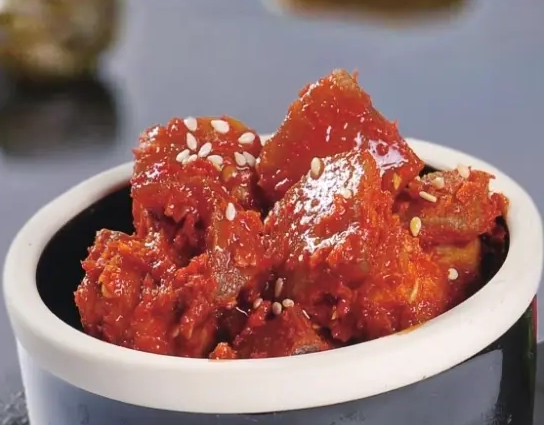
Indeed, Guiyang has earned its distinction as a breeding ground for champions, having nurtured and produced a constellation of Olympic champions, including the esteemed Hou Zhihui and Yi Siling and the celebrated Paralympic champion Shi Yiting. The illustrious list of champions also extends to world-class athletes such as Li Ping, Zhang Wangli, and the Asian champions Luo Shifang and Wang Jiali, among others.
Guiyang boasts an impressive record of nearly 54 national championships, 57 world championships, and 2 Olympic championships across various disciplines, such as weightlifting, shooting, and athletics. The ceaseless cultivation of future champions continues to be a hallmark of Guiyang’s sporting endeavors.
These remarkable achievements are not isolated phenomena but are underpinned by a robust economic foundation. As the shining exemplar of Hunan Province, Guiyang County has consistently ranked among the province’s top 10 in terms of comprehensive economic prowess for numerous consecutive years. Moreover, in 2022, Guiyang ascended to the distinguished 93rd position among China’s top 100 counties, showcasing its immense potential for development.
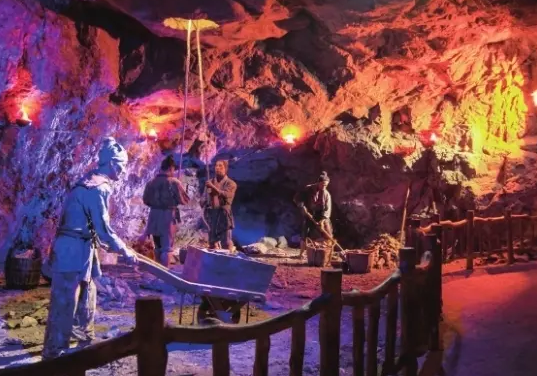
Beyond the cultivation of champions, Guiyang has also embraced an expansive vision for economic growth, guided by the resolute spirit of “faster, stronger, and higher”. In the present era, Guiyang stands as a testament to the seamless integration of cities, joining the ranks of the interconnected Changsha-Zhuzhou-Xiangtan metropolitan area and the vibrant Pearl River Delta urban cluster.
Seizing the opportune moment to integrate into the Greater Bay Area, Guiyang has made remarkable strides in advancing industries such as smart home manufacturing, non-ferrous metals, and e-commerce. With an unwavering commitment to progress, Guiyang has consistently ranked among the top 10 economically prosperous counties in Hunan Province for six consecutive years. As the future unfolds, Guiyang is poised to deliver even greater triumphs.




